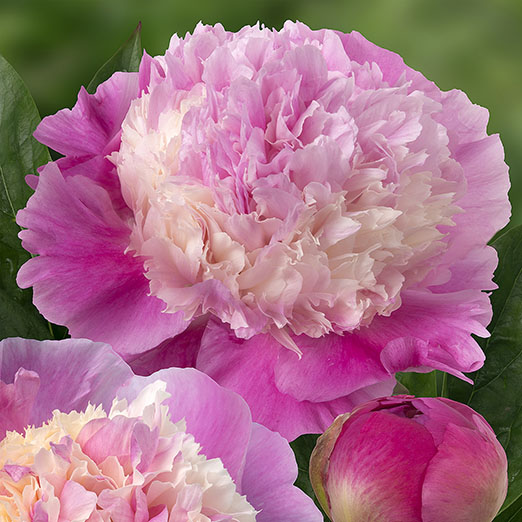How to grow Abelia
Abelia are attractive evergreen and deciduous shrubs which have profusions of small delicate flowers blooming along their stems throughout summer and autumn.
Most Abelia varieties retain their foliage all year round, but in some parts of the UK, deciduous types can lose up to half of their leaves.
These delightful shrubs are related to Honeysuckle and are popular and reliable, rarely suffering from pests and diseases. The flowers are also loved by bees and the foliage is often dark green and glossy but variegated varieties such as Abelia x grandiflora Hopleys are available.

Key Information
Soil pH
Position
Hardiness


Where & when to plant Abelia
Position - Full sun
Soil - Moist and well-drained
Flowering Period - Summer and autumn
Hardiness - Hardy
Abelia thrive best in full sun, so pick a site which receives plenty of sunshine or just a little shade where you can enjoy the colour changing foliage and beautiful flowers. The front to middle of the garden border suits Abelia and they look great when planted in groups. Take note of the eventual height and spread of the plant you are growing so it does not impose on nearby plants over time. Try to avoid a spot which is exposed to harsh winds as the young leaves of Abelia can get damaged.
Abelia are also well-suited for container growing, particularly the more petite varieties and need little attention once established. Choose a classic medium to large container such as Hayloft’s Belair planter to show these pretty shrubs off on your patio.
Abelia grow well in all soil types as long as it is well drained.
How to plant Abelia
Once you have decided on the perfect spot for your Abelia, dig a hole slightly wider and deeper than the pot which your plant arrived in.
Add some organic matter to the base of the planting hole in the form of garden compost or manure to give your young plants a boost and help them off to a great start.
Carefully tease your plant from its pot and loosen the roots before placing in the planting hole.
Fill in around the edges with garden soil and firm in well before watering. Be sure to keep your plant well-watered until it has established, especially if it is dry.
If you are growing a more compact variety of Abelia such Abelia grandiflora Lucky Lots in a container then make sure the pot is large enough to accommodate your growing shrub. Plant potted Abelia into a mix of compost, organic matter, and grit. Be sure to add some crocks to the bottom of the pot to assist drainage too.

What to plant with Abelia
The range of forms and colour of Abelia mean there is a shrub to suit most garden schemes.
Abelia work well when planted in groups of and can form great low and interesting hedging. They make a great addition to a large shrubby border amongst other woody plants such as Physocarpus, Weigela, Spirea, Hebe, Ornamental grasses, Nandina, Cotinus, Daphne, Pittosporum, Philadelphus and Deutzia.
The tubular, trumpet shaped flowers have a delicate fragrance and are a rich source of nectar for our native bees.
If growing in the border, taller varieties should be planted towards the back, so they do not drown out other plants.



How to care for Abelia
Abelia only need watering to establish young plants and during periods of very dry weather. Otherwise, once established in the garden, Abelia will happily grow and flower readily with little care.
Pot-grown Abelia will benefit from an annual liquid feed of balanced fertiliser in spring and a mulch of compost to the top of the pot to maintain soil nutrients. Keep the pots watered especially during dry spells.
Abelia should only be pruned to maintain their shape or tidy up any overgrown or damaged stems. Hard pruning will result in fewer flowers because Abelia flower on old wood.
How to propagate Abelia
Abelia plants can be propagated by taking softwood cuttings in early summer. Remove new, non-flowering shoots with a sharp knife or pair of secateurs approximately 10-15cm long. Remove the lower leaves and dip the cut end into hormone rooting powder or gel. Push your cuttings in around the edge of a pot of seed or multipurpose compost with some added grit or perlite to assist drainage. Insert your cuttings in to just below a leaf node as this is where the new roots will be produced from.
Hardwood cuttings can also be taken in late summer in a similar way. Ensure the material you remove from the main plant has a sliver of the main stem (the heel) attached by carefully removing by hand rather than with your secateurs or knife.




